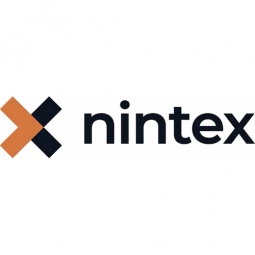Technology Category
- Analytics & Modeling - Process Analytics
- Analytics & Modeling - Robotic Process Automation (RPA)
Applicable Industries
- Equipment & Machinery
- Finance & Insurance
Use Cases
- Leasing Finance Automation
- Material Handling Automation
Services
- System Integration
About The Customer
Extraco Banks was founded in 1902 as a cotton compress and warehousing business in Waco, Texas. Today, Extraco (an acronym for Exporters and Traders Compress) is the largest and most comprehensive independent financial institution in central Texas with more than $1.5 billion in assets and 120,000 customers across 15 branch locations. Extraco has adopted a lean culture focused on eliminating waste and process improvement. In 2016, the bank realized the need to implement new technologies to stay on the cutting edge and to compete with larger national banks – including investing in process automation tools.
The Challenge
Extraco Banks, a community bank with over $1.5 billion in assets and 120,000 customers across 15 branch locations, was facing a challenge with its remote deposit capture (RDC) approval process. The process was manually reviewed and approved by the bank’s call center staff twice a day, which was time-consuming and inefficient. The bank wanted to automate this process to free up its staff and expedite the process for its customers. One of the bank’s most manual processes was approving RDC requests. Extraco’s call center team of just 15 was responsible for reviewing RDC requests in addition to fielding customer calls and questions. The manual process meant customers had to wait hours, sometimes days, to know if they were approved for remote deposit capture. The slow drawn-out approvals resulted in calls into the bank’s call center, with remote deposit capture requests ranking as one of the most common complaints.
The Solution
Extraco Banks decided to implement Nintex RPA to automate the remote deposit capture approval process. With Nintex RPA, remote deposit capture requests are now completed in three to five minutes and processed (if there are requests) every hour, each day. Customers no longer need to wait until Monday morning for an after-hours request on a Saturday to be processed. Extraco worked with the Nintex team to build the solution in just 12 hours. Now, a Nintex RPA Botflow checks the online portal for RDC requests every hour, and processes any existing requests. In addition to reviewing RDC requests, the bot also approves or turns off the customer’s ATM deposit feature if the customer score is high enough – an additional step call center staff would usually take.
Operational Impact
Quantitative Benefit

Case Study missing?
Start adding your own!
Register with your work email and create a new case study profile for your business.
Related Case Studies.

Case Study
Smart Water Filtration Systems
Before working with Ayla Networks, Ozner was already using cloud connectivity to identify and solve water-filtration system malfunctions as well as to monitor filter cartridges for replacements.But, in June 2015, Ozner executives talked with Ayla about how the company might further improve its water systems with IoT technology. They liked what they heard from Ayla, but the executives needed to be sure that Ayla’s Agile IoT Platform provided the security and reliability Ozner required.

Case Study
IoT enabled Fleet Management with MindSphere
In view of growing competition, Gämmerler had a strong need to remain competitive via process optimization, reliability and gentle handling of printed products, even at highest press speeds. In addition, a digitalization initiative also included developing a key differentiation via data-driven services offers.

Case Study
Predictive Maintenance for Industrial Chillers
For global leaders in the industrial chiller manufacturing, reliability of the entire production process is of the utmost importance. Chillers are refrigeration systems that produce ice water to provide cooling for a process or industrial application. One of those leaders sought a way to respond to asset performance issues, even before they occur. The intelligence to guarantee maximum reliability of cooling devices is embedded (pre-alarming). A pre-alarming phase means that the cooling device still works, but symptoms may appear, telling manufacturers that a failure is likely to occur in the near future. Chillers who are not internet connected at that moment, provide little insight in this pre-alarming phase.

Case Study
Premium Appliance Producer Innovates with Internet of Everything
Sub-Zero faced the largest product launch in the company’s history:It wanted to launch 60 new products as scheduled while simultaneously opening a new “greenfield” production facility, yet still adhering to stringent quality requirements and manage issues from new supply-chain partners. A the same time, it wanted to increase staff productivity time and collaboration while reducing travel and costs.

Case Study
Integration of PLC with IoT for Bosch Rexroth
The application arises from the need to monitor and anticipate the problems of one or more machines managed by a PLC. These problems, often resulting from the accumulation over time of small discrepancies, require, when they occur, ex post technical operations maintenance.

Case Study
Data Gathering Solution for Joy Global
Joy Global's existing business processes required customers to work through an unstable legacy system to collect mass volumes of data. With inadequate processes and tools, field level analytics were not sufficient to properly inform business decisions.







